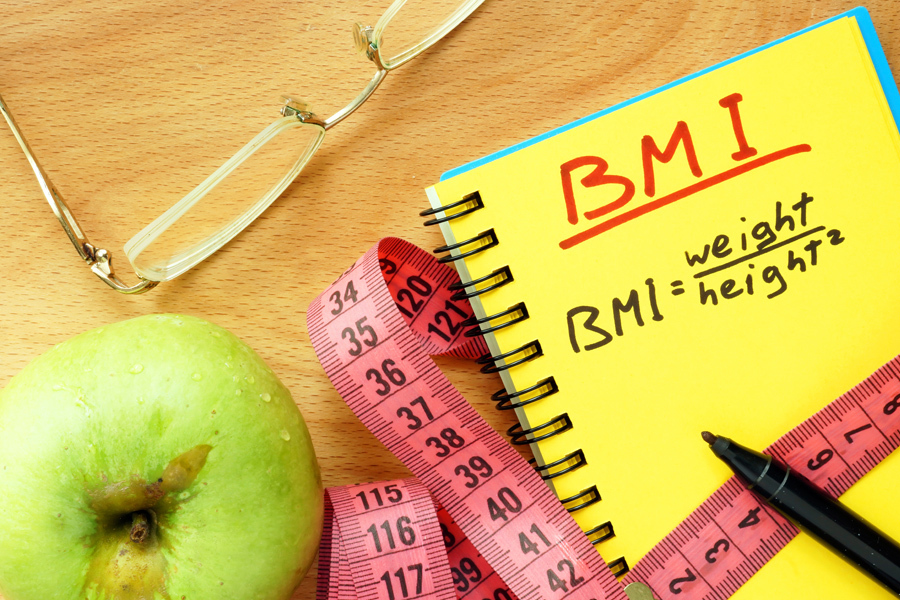Assessing Weight Status: What is Body Mass Index (BMI)?

The Body Mass Index (BMI) relationship between weight and height was originally developed in the early 1940s by Actuaries at the American based Metropolitan Life Insurance Company.
It was used to assess the risk of death, and therefore calculate life insurance premiums. Their data demonstrated that those with a heavier weight compared to their height were at greater risk of death (in particular from cardiovascular disease) than those with a lower weight compared to their height.
These BMI tables, albeit updated from the 1940’s, still remain one of the most widely accepted ways to assess risk to health from overweight by using simple anthropometric (body) measures.
Many people are familiar with the BMI as an indicator of whether an adult is of a healthy weight or not. BMI is based on the relationship between your body weight and your height and is calculated by dividing your body weight in kg by your height squared measured in metres:
BMI = body weight (kg) / height (m2)
The BMI concept relating weight to height, and its relationship with risk of mortality has now been verified in many long term studies. People with a high BMI in the obese range have been clearly shown to experience a much greater risk of mortality from all causes than people whose BMI is in the healthy range.
Risk increases as BMI increases. Hence, public health messages strive to encourage the population to keep their BMI within the healthy range.
Adult BMI ranges which describe ‘weight’ status
The following table provides the ‘cutoff’ values commonly used to describe overweight and obesity in adult caucasian populations.
| Body Mass Index | <19.5 | 20 to 24.9 | 25 to 29.9 | 30 to <35 | 35 to 39.9 | >40 |
| (kg/m2) | Underweight | Healthy weight | Overweight | Obese Grade 1 | Obese Grade 2 | Obese Grade 3 |
Note: The term ‘morbidly obese’ is sometimes used to describe those with a BMI >40 kg/m2 who are considered at very high risk of illness or death due to their excess weight.
Known shortcomings
While BMI cutoffs are widely used, some shortcomings are known and should be highlighted:
- They are relevant only to adults. Children require different BMI cutoffs to assess their risk as do elderly people and those with chronic diseases.
- Different ‘cutoffs’ are also used for different ethnicities, for example, in Asian and Aboriginal people. This is due to differences in bone structure and differing levels of disease risk when overweight or obese.
- BMI is based only on body weight and does not distinguish between body muscle and body fat. So some individuals who are very muscular may have a BMI in the overweight range and yet have a normal level of disease risk.
- BMI does not distinguish where body fat is deposited. Risk is much higher when fat occurs around the abdomen
The importance of circumferences to estimate disease risk
Fat deposited around our central body zone is often the first thing people notice they are becoming overweight.
Evidence suggests that fat deposited on the abdomen increases health risks more than fat deposited on the legs, arms or hips.
For this reason, interest has grown in measuring waist and hip circumferences. This is easily done using a simple tape measure. Either the waist circumference alone or the ratio of waist circumference to hip circumference (distinguishing an ‘apple shape’ from a ‘pear shape’) are used to estimate health risks.
Different types of fat
As we now learn more about what factors increase our risk of disease and in particular the health issues around obesity, the role of different types of body fat has become clarified. In essence, our bodies have two different types of fat: subcutaneous fat and visceral fat.
Visceral fat is laid down around our main organs in our abdomen, in particular around the liver, pancreas and kidneys. Once thought to be inert and not metabolically active, we now recognise that visceral fat produces inflammatory agents that drive metabolic disturbance.
Those people who tend to lay down fat around their abdomen (‘apple shape’) have more visceral fat and tend to have a greater risk of developing Type 2 diabetes, cardiovascular disease and stroke.
So, the measurement of waist circumference has become a useful and quick indicator of this disease risk.
What we know
More recently nutritionists have become interested in the ratio of Waist circumference to Height. Evidence shows that people with a high waist circumference compared to their height have a greater disease risk than people with a lower waist circumference compared to their height.
Unlike BMI, the same waist to height ratio cutoffs can be used with different ethnicities and they can also be used in children.
The useful take home message regarding waist-to-height is ‘keep your waist to half your height’.
Using risk indicators
All measures of health risk and overweight, are designed mainly to be used to examine risk for whole groups or populations. They are measures that are simple to perform and cheap to use on large numbers of people. But they are less good at estimating an individual’s actual level of risk.
To find out how much fat a person has on their body and exactly where this fat has been deposited we need to use much more complex methods that can tell us about body composition.
What lies beneath…
Our bodies are comprised of four different compartments which are: water, fat, lean tissue (muscle) and mineral (bone). There are gender differences in the amount of fat and lean (muscle) we have on our bodies, with males having a higher proportion of lean and a lower proportion of fat than most women.
Available technology
To measure these different compartments or our ‘body composition’ we need to use more sophisticated methods than a tape measure. A measure of body composition can be more informative for an individual than either BMI or a waist: height ratio as it can provide detail as to how much body fat they have and enable a more tailored approach to assess and perhaps reduce their risk of developing diabetes or cardiovascular disease.
One reference method for body composition is Dual Energy X-ray Absorptiometry (DXA) which gives an accurate measure of actual amount of fat, muscle and mineral (bone) that person has and also where it is located in their body.
Remember that the visceral fat located around the abdomen where the main body organs are located is the sort of fat that is particularly associated with the common chronic diseases that lead to premature death.
These scans can be helpful at an individual level to monitor the effectiveness of diet and or exercise on body fat and on lean or muscle. In weight loss, what we ideally want to achieve is a reduction in body fatness with preservation of lean or muscle mass.
Assessing body composition
If you’d like to learn more about the advantages of a body composition assessment, consider taking part in this activity.
- Access this document with scans of two young women who have the same BMI within the ‘normal range’ but very different body compositions.
- Examine the scans – which person do you think is more likely to have the greater risk of cardiovascular disease?
- Think about whether knowledge of their body composition could be helpful to these women and whether diet and or activity could be used to alter their %body fat.
Share this

Reach your personal and professional goals
Unlock access to hundreds of expert online courses and degrees from top universities and educators to gain accredited qualifications and professional CV-building certificates.
Join over 18 million learners to launch, switch or build upon your career, all at your own pace, across a wide range of topic areas.
Register to receive updates
-
Create an account to receive our newsletter, course recommendations and promotions.
Register for free








